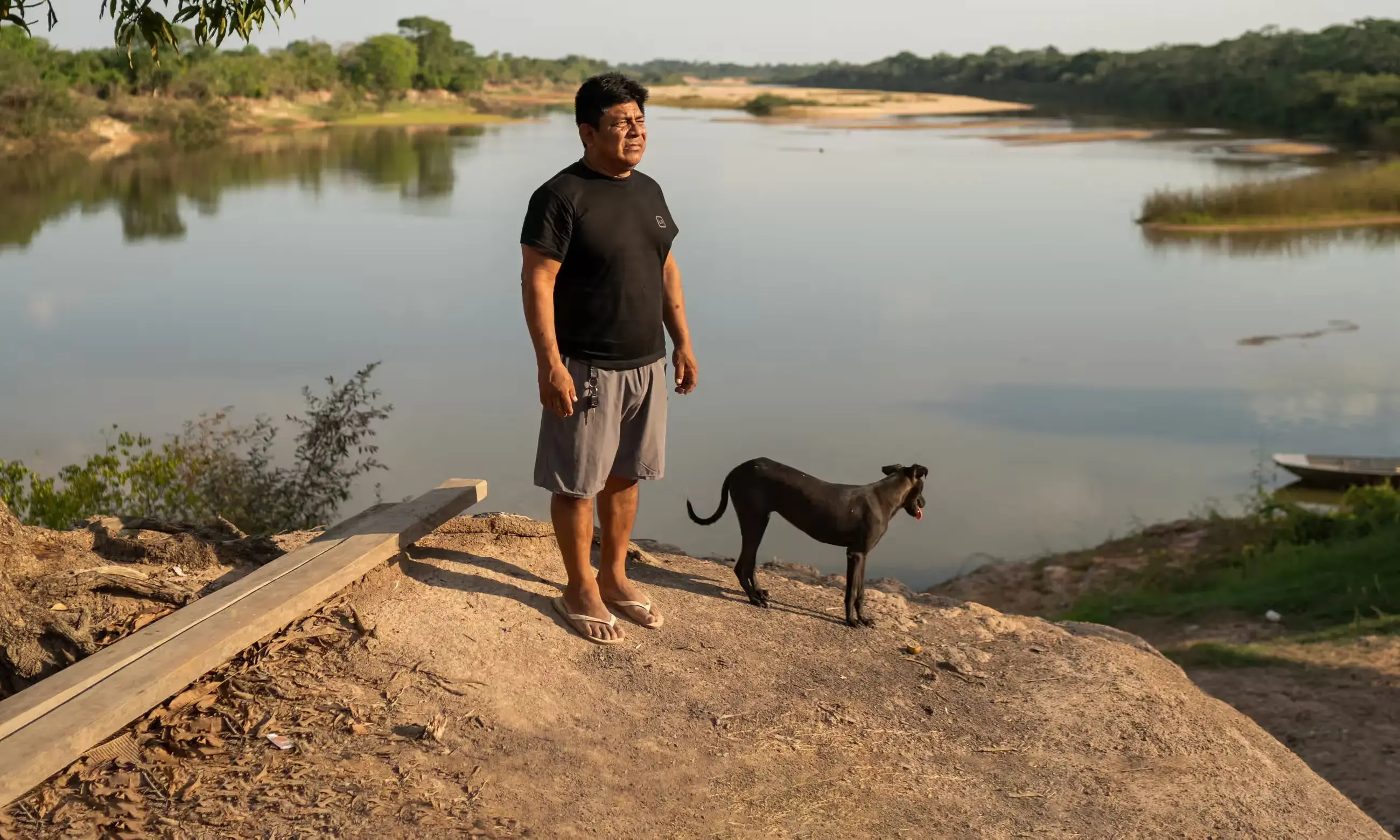
Brazil’s Bananal Island lies where the biodiversity hotspots of the Amazon and Cerrado meet, yet traditional Indigenous food sources are disappearing. What went wrong?
To mark the transition to adulthood, Brazil’s Javaé people make an offering of manioc flour to Auranã, the divine being who keeps the secret of manhood. The flour is placed ready for the divinity’s visit in a straw-covered hut, known as the “house of the great spirit”.
For last year’s ritual, however, there was no flour.
Usually, the tribe grows manioc alongside fruit and other crops, but last year Vagner Javaé, the cacique, or chief, used watermelons for the offering – and even these were not grown by the tribe. Instead, Vagner had to leave the village of Boto Velho, located on Bananal Island, and drive to the nearby town of Lagoa da Confusão.
Fish and manioc flour are traditionally the staples of the village’s diet. However, due to the extreme drought affecting the region’s rivers, water has become scarce and the fish have vanished. Rather than fishing or producing their food, Vagner’s community at Boto Velho is compelled to buy it.
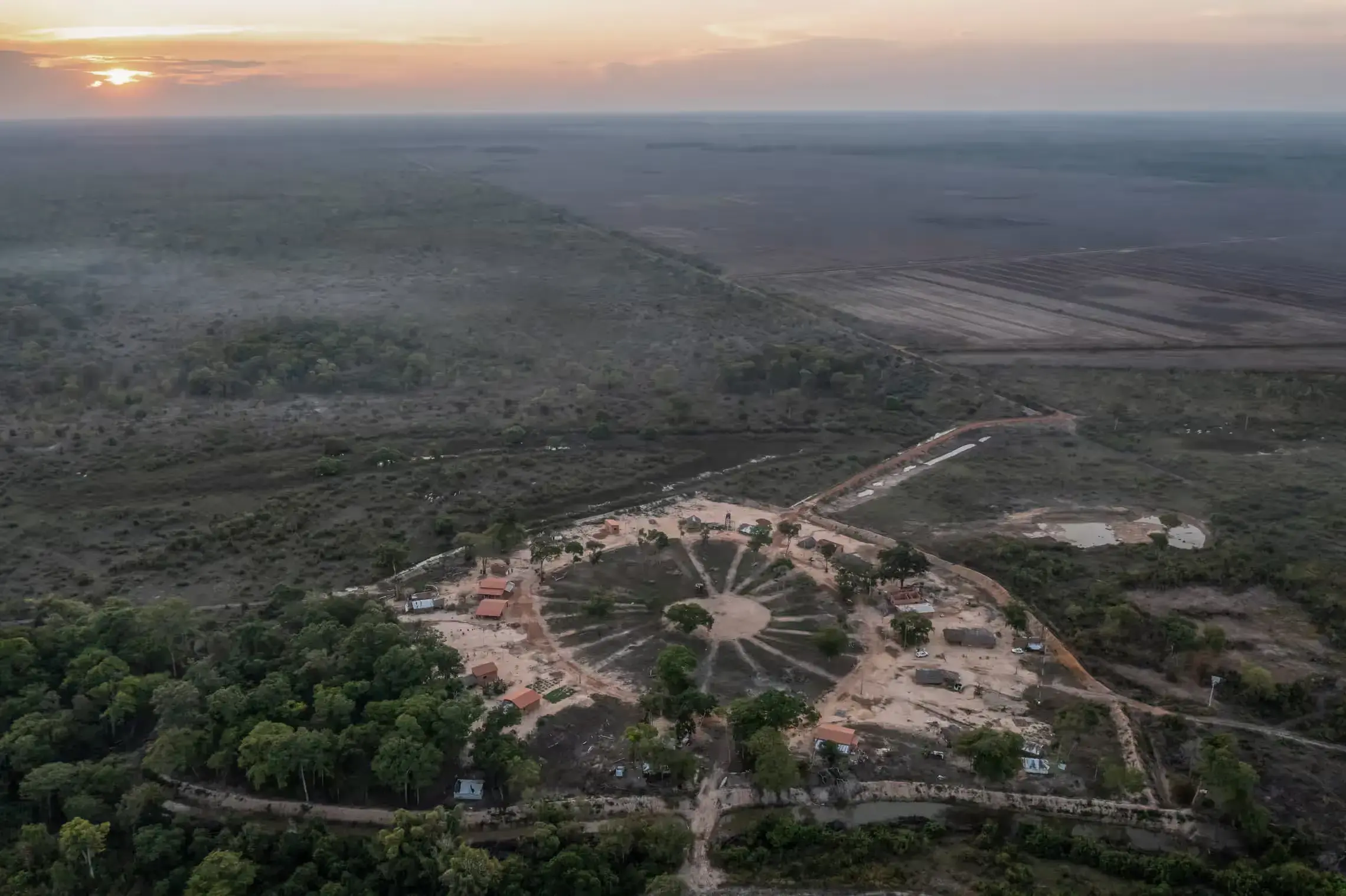
Bananal Island, in the Brazilian state of Tocantins, is one of the largest – if not the largest – river islands in the world. Despite living between two of the planet’s richest and most biodiverse biomes, the Cerrado and the Amazon, Indigenous people living on the island, such as the Javaé, and nearby, such as the Krahô-Takaywrá and Krahô-Kanela to the east, now find themselves reliant on supermarkets rather than the land to fulfil their needs.
Droughts, floods, soil erosion and the silting of the Javaé and Formoso rivers and their tributaries have led to food insecurity for these tribes. The rivers have been adversely affected by decades of damming and irrigation projects initiated in 1979 by the Brazilian military regime, which sought to convert the region into an intensive agriculture hub. Forty-five years on, such projects continue to be developed despite evidence of their human and environmental impacts.
The Krahô were expelled from their ancestral lands in Lago da Praia in the 1970s by ranchers, backed by the Brazilian military dictatorship and the local government, and taken in lorries to other areas.
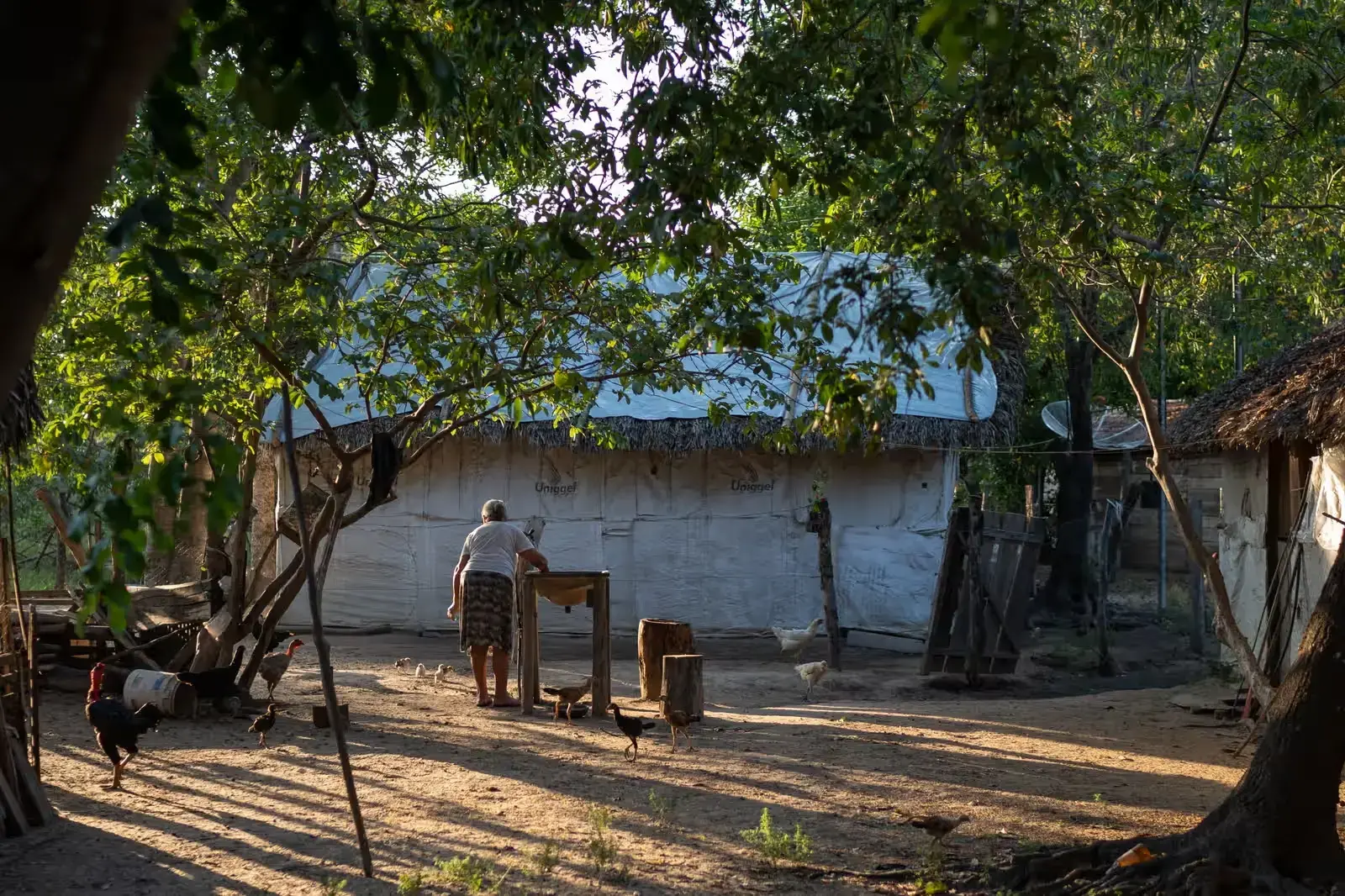
Now, their homes resemble urban slums. As the territory is contested, the inhabitants cannot build permanent structures. Their shacks are covered with large white tarpaulins made out of seed sacks donated or sold, along with used pesticide containers, by employees of large nearby farms.
The chief of Takaywrá village, José Valdete Xorxo Ribeiro da Costa Krâho, 83, recounts surviving as a farmhand on various farms across the region, moving from one to another until 1996, when he engaged in the Indigenous struggle for land. Since the early 2000s, he and his people have tried to reclaim their territories by occupying the land, which they call Mata Alagada (flooded forest), but have been compelled to leave at least three times.
Valdete, as he is commonly known, mourns the days when hunting and fishing provided food, which he says is now unfeasible on the eight-hectare land (about 20 acres) where he now resides. “Now the situation is different because we lack territory,” he says. “And those who possess territory often suffer crop losses, which affects the community.”

The development of new dams and canals to divert rivers for industrial agriculture, he says, has led to reduced soil fertility, crops being lost and the displacement of residents. “Today, when attempting to fish in the river, you realise the fish cannot survive. There’s no water, hence no fish.”
In addition to living on a small plot of land that officially is not theirs, the Krahô-Takaywrá are forced to relocate annually during the flooding season due to changes caused by damming and irrigation projects. “They are caught in a loop of the Formoso River. When the river swells, the groundwater also rises,” says Filogônio Luiz, a member of the Indigenous Missionary Council (CIMI), a Catholic advocacy group. “This situation persists for months.”
REPRESENTATIVES of the Krahô-Takaywrá and Krahô-Kanela in Tocantins, NGOs and grassroots movements spent three years investigating the Indigenous situation in the region. In the report Permanent People’s Court in Defence of the Cerrado Territories, published in July 2022, they state: “Changes in river dynamics have rendered traditional farming plots unviable. The number and diversity of fish, the primary protein source for local communities, have sharply decreased, and pesticides contaminate food.”
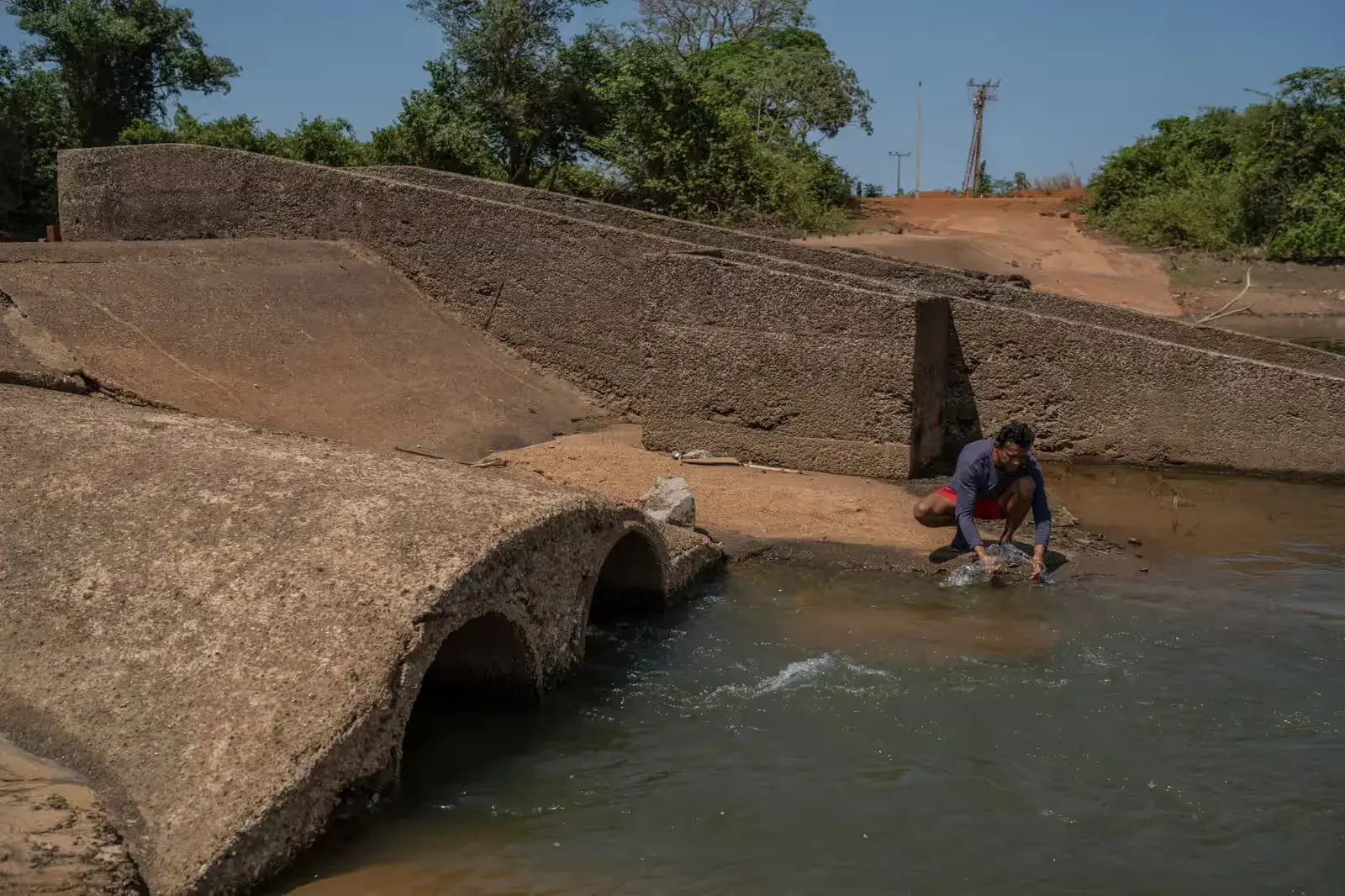
Levi Pêphã Brito Ribeiro Krahô, an Indigenous leader from Takaywrá, says the dam on the Urubu River acts as an insurmountable barrier to upriver fish migration, affecting reproduction. “Fish such as pirarucu and turtles once frequented here, but now they do not,” he says.
Luiz notes that Takaywrá has experienced more severe flooding in recent years. He attributes this to the Javaé River being affected by the silting of its source, the Araguaia River springs, due to agribusiness activity in neighbouring states, such as Goiás and Mato Grosso, and riverside deforestation.
Industrial agriculture surrounding Bananal Island relies on irrigation canals, Luiz says, disrupting the rivers’ natural water cycle. Water extraction using powerful pumps and canals is another cause of water scarcity in the Javaé riverbed, he adds. “The canals change the course of the rivers. At times, the rivers are dammed. At others, they lose the natural protection they had developed over time.”
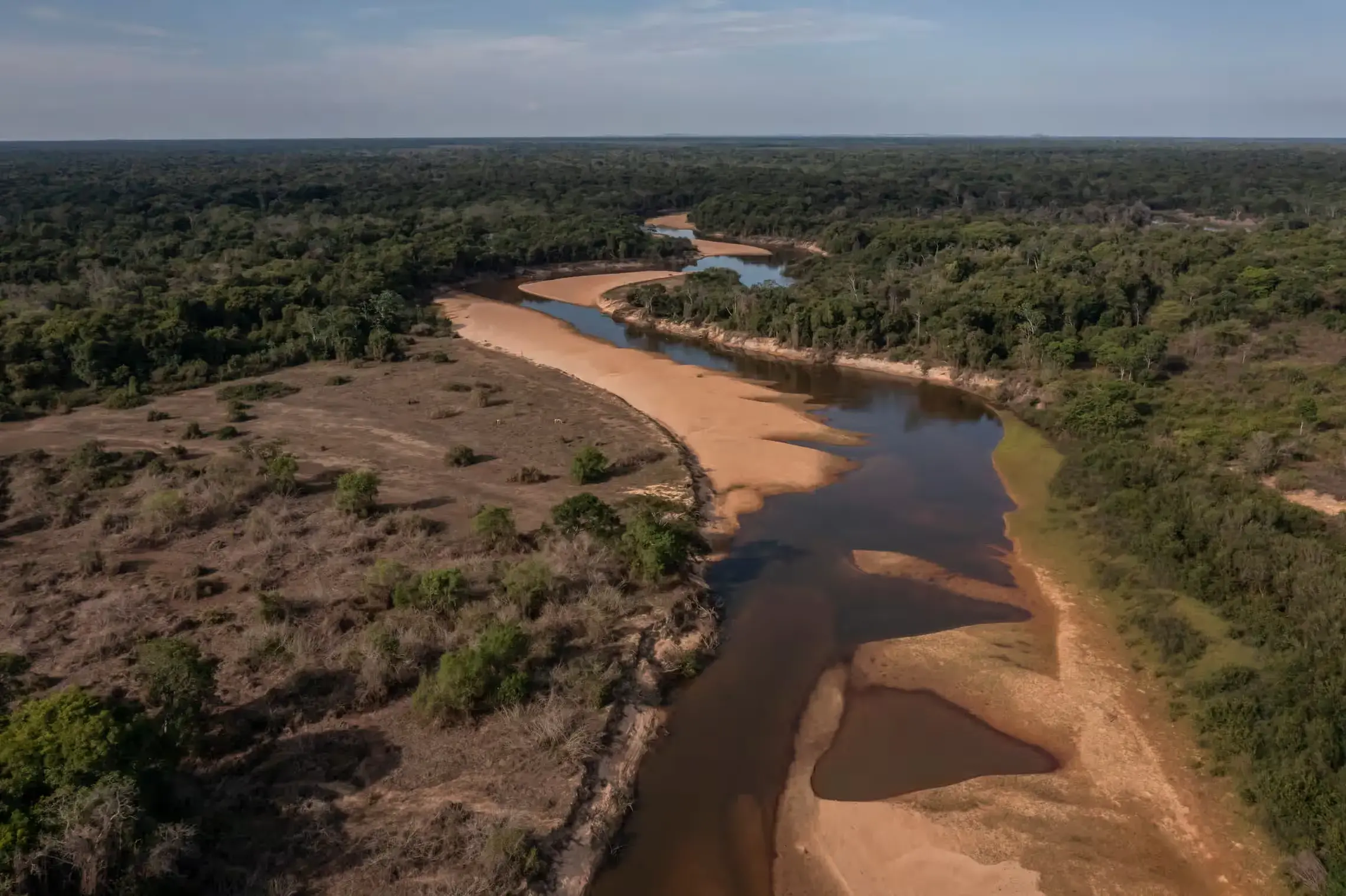
These landscape changes have caused the soil to become extremely moist or excessively dry. In both scenarios, the Indigenous communities have been unable to maintain their traditional farming practices.
Soil fertility, which relies on natural river flooding, has also deteriorated due to droughts on Bananal Island. “The soil lacks the chemical and physical properties that once ensured the subsistence and food security of Indigenous peoples,” Luiz says.
The canals are part of large-scale irrigation developments inaugurated with the Rio Formoso project during the dictatorship. This project followed the model of the Xingu Indigenous park, the nation’s first Indigenous land, established in 1961, which forced contact between white settlers and Indigenous populations living in voluntary isolation. “To continue the colonisation,” Luiz says, the next step was to proceed with “territorial cleansing” – as officials and farmers referred to deforestation.
The land was then allocated to large cooperatives, such as the Rio Formoso Agroindustrial Cooperative (Cooperformoso), as part of an official strategy to promote agriculture and economic development in the region. These cooperatives began to consolidate through mergers and acquisitions, resulting in a concentration of power in the hands of a few groups, according to Luiz.
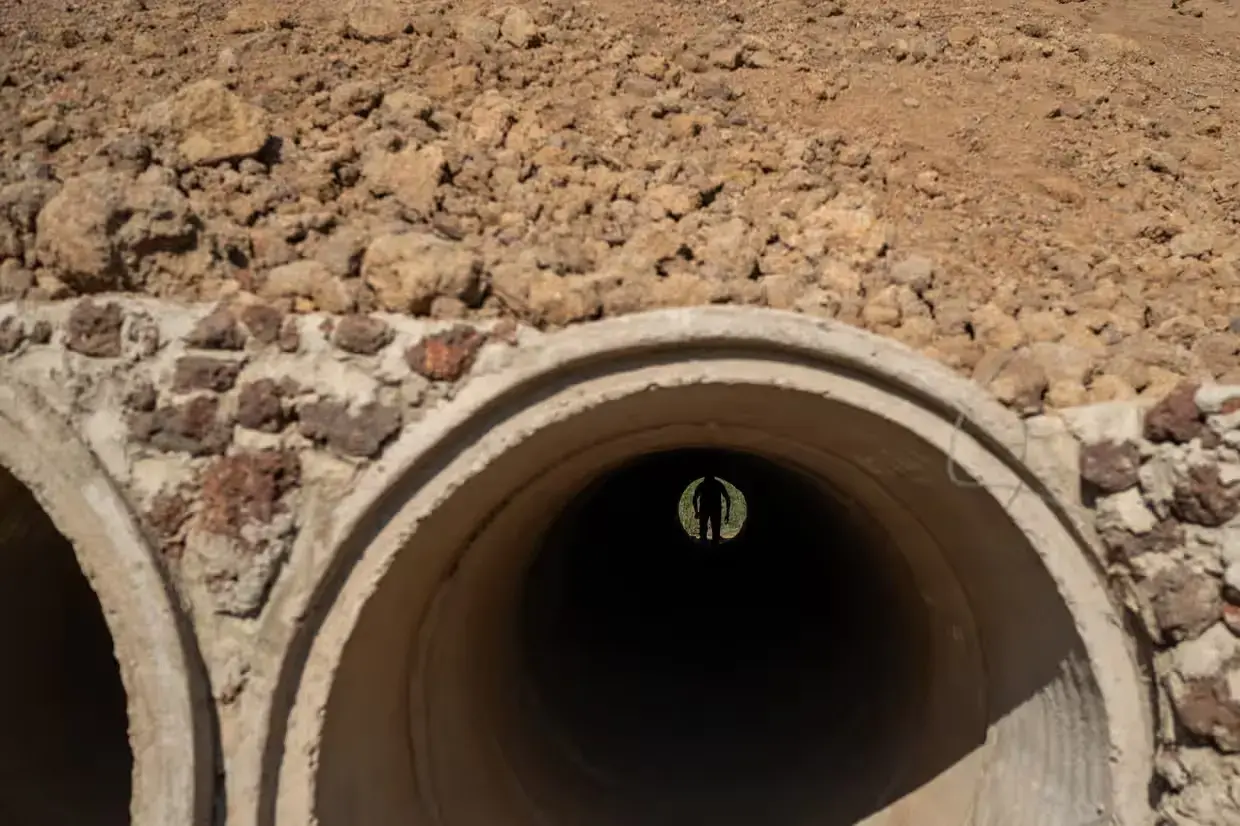
Wagno Milhomem, president of the Association of Rural Producers of Southwest Tocantins and vice president of the Federation of Industries of the State of Tocantins, denies the allegations made by the Indigenous people. He says, “Several technical studies have shown that the dams can supply canals without causing any impact on the volume and flow of rivers.”
According to him, the change in river flows does not have an impact on food security, and fish migration is not affected by the dams since they only operate in June, July, and August. Milhomem also argues that removing the dams could lead to a loss of “jobs, income, housing, and human dignity” for the Indigenous population. “The dams have actually improved their quality of life,” he says. “The impacts are extremely positive.”
Prosecutors from the Federal Public Prosecutor’s Office informed that they “obtained a favourable court decision ordering the federal government to create a reserve” for the Krahô-Takaywrá in the area, along with the installation of a water tank and a temporary treatment system to tackle the problem of drinking water shortages.
On and around Bananal Island, Laudovina Pereira, a CIMI coordinator who monitors the region closely, observes that human actions are altering the cycles of nature and affecting the environment and the Indigenous communities. “In Bananal, God no longer decides whether there’s water or not,” Pereira says. “Now it’s the farmer and agribusiness.”











